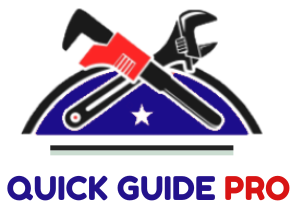Welcome to our article on how to maintain and lubricate Snap-on ratchets.
A ratchet is a precision tool. But your ratchet may get stiff. The reasons are a build-up of fine dust from dirt ground up by the gears and pawls inside and lack of lube.
However, regular care and proper maintenance can prevent damage and prolong its life.
Snap-on, a quality hand tool brand stands out from the crown of ratchets available in the market. This company has a proven background in solving the critical ratcheting work to make your project more productive and safer.
This article will provide you with the necessary information you need to maintain and lubricate your snap-on ratchet correctly. Moreover, this information may apply to other ratchets as well beyond snap-on.
Tools and Supplies that I’ve mentioned in this post:
Products | Product Name | View Product |
Carb Cleaner | ||
Snap ring pliers | ||
Lubricant |
How to Maintain and Lubricate Snap-On Ratchets- Step-by-Step Guidelines
It’s good to clean and re-lube your ratchet every year or two. However, inspect and disassemble it if you don’t hear a clean, smooth ratchet sound or sense a problem.
A soak in the lubricant will sometimes get your stiff ratchet turning freely again. The best method to open the ratchet is- to clean the internals with carb cleaner and a toothbrush and then re-lube it. A screwdriver or snap-ring pliers are about all that’s needed.
If you’re working on a Snap-On or Craftsman with a detent ball, get an SPP744 tool to hold the ball while installing the pawl.
We’re going to show you the maintenance process of the snap-on swivel head ratchet.
Step 1:
First, clean off the foreign materials from your ratchet.
On a pear-shaped ratchet, you’ll find a snap ring and two screws holding a backplate in place.
Simply take out the screws. Of course, find a screwdriver that fits the holes properly.
You’ll find forward and reverse levers. Switching the lever back and forth several times will help you to clean the build-up dirt from between the pawl and the housing.
If you’re using your ratchet in automotive projects or something like that more than likely to have a little bit of garbage build up in these holes. In this case, you might not be able to round them off with a screwdriver to get them out.
So, take a fine little pick or something and clean those slots out before you try to get a screwdriver in there.
Step 2:
Once you get the two screws out of there, pop off the plate right there. Pick that plate up. Here’s the gear. Clean the pieces out of this. Inspect the teeth to ensure that the teeth are not damaged.
Check the moveable parts -pawl and gear to see if these are broken or in good condition.
Step 3:
First, remove the head. Next, pull out the gear and clean it with a degreasing compound. Then, Clean all the stuff off it with a toothbrush. Also, brush the screws and the head.
Step 4:
The formula for cleaning any part that you don’t want to rust is solvent hot water and air. Then take an air hose and blow it off.
Blow most of the water out or all that you can get out. And heat retaining the part will dissipate the rest, and you won’t have to rust.
Step 5:
Lubricate the tool.
To do this with the excess on your fingers, coat the plate from both sides. Put one little dropdown where the indent ball is. It’ll lubricate the spring and backside of the bowl. Wipe off the excess. Also, put one drop of oil on the bearing surface to lubricate it.
Wipe off the excess oil. It’s the primary step to prevent rusting. Do the same thing with the screws. Just put a little drop of oil on the screws.
Step 6:
Put the ratchet back together. Replace the backplate on put the screws in. Give it a good tightening on both sides.
And this one will be ready to go back into service.
That’s how you can basically maintain your ratchet.
How to Lubricate a Ratchet- Ratchet Lubrication Basics
Here are a few questions and guidelines about ratchet lubrication.
After doing our research and having solicited opinions from fellow forum members and professional mechanics, we’ve distilled it down to a few general guidelines.
This topic generates a lot of differing opinions. There is no one solution in every case. Most importantly, personal preference and your specific working conditions and requirements make one lube good for your ratchet. But it may be a bad choice for someone else.
Anyway, in most cases, the following guidelines that we’re presenting here will net you good results.
THE FIRST QUESTION–why should a ratchet be lubed? After all, the factory did it perfectly, and it’s permanent. Right?
Nope.
If you disassemble your ratchet, you may see a little lube on there, or it may be bone-dry.
When you’re tightening a fastener, you’re applying torque and a ford motion against the ratchets mechanism. If you pull back to reset, the resistance you feel from the mechanism is back drag.
In case there is too much back drag, you may actually loosen the fastener instead of having the ratcheting action work. Lubrication can really help here.
Lastly, lubrication will help prevent corrosion and rust. It’s very important for people who work in wet environments like marine mechanics or anybody who’s out doing work on the car and happens to get caught in a rainstorm.
THE SECOND QUESTION–what are some guidelines for lubrication?
Firstly, give a light coating of oil anywhere metal touches in the case of the smaller ratchet. It’s pretty much all the componentry in here. The small parts in here need to be able to move freely and smoothly.
Different types of ratchets come with different teeth count. The generally accepted guidelines for viscosity are as follows.
- If you have a smaller size ratchet with a higher teeth count, you’re going to need a thinner lubricant.
- In case you have a larger size ratchet with a lower tooth count, you’re going to use a thicker lubricant.
If you use thick lube on a high tooth ratchet, it could fill in these tiny teeth and call it skipping conversely.
On the other hand, if you use a very thin lube on this one, it’s not going to do very much. And in the case of thin loops, we also run into the problem of non-sealed ratchets- it will leak out into your toolbox.
THE THIRD QUESTION–What specific lube to use or which ones not to use?
Which one is the best lube for ratchet?
The first part of this question is straightforward. First of all, use the manufacturer’s recommendation.
Some ratchets are engraved with oil only or in the case of something like Snap-on. The manufacturers recommend that you should use Super Lube if you go with their recommendation. Snap-On includes a grease called Super Lube which is great for this use.

Above all, you’ll keep your warranty intact without any problems, and it should work quite well.
What Lube Should You Not Use
WD-40 is a bad choice. It’s very thin. In fact, this lube is designed to displace water not to create a lasting lubricant.

Anything that’s water-based is a bad choice because it’ll promote corrosion and possibly get mouldy inside. Moreover, it’s also easy to accidentally wash it out and not wax.
Finally, they could bind gum or something like a car wax which is too thin of a coating to do any good.
Ratchet Maintenance Tips
- Wipe all dust and debris from your ratchet regularly.
- Ensure that the backing plate screws are tight enough so that no foreign materials enter your ratchet head. Check it weekly.
- To remove dust and grime build-up, you should disassemble, clean, and soak the ratchet head in a solvent. Do the process monthly in case of heavy use, and quarterly in case of light use.
- Replace any damaged component. Contact your distributor for a suitable ratchet repair kit.
- While lubricating, don’t overload with the grease. Always lightly lubricate the gears after the repair and before re-assembling them.
- For lubrication, don’t use grease. Because it’ll attract dirt that builds up and turns into a grinding compound, wearing the ratchet out shortly. Simply use a little oil.
- To ensure reliability and maximum performance, perform the above maintenance and lubrication steps at least once each year.
- Make sure you’re using the right size ratchet for the job. Don’t try to use a 3/8 inch drive ratchet to do the job of a ½-inch model.
Conclusion
Ratchet wrench is a workhorse in a toolbox. It’s an essential tool for getting a project done properly and quickly.
Remember!
Only proper cleaning and lubrication can provide with you smoother operation and the best ratchet service for years after years.
So, implement regular inspection and maintenance routine.
Thanks for reading our article on how to maintain and lubricate snap-on ratchets.
Happy ratcheting!

I’m Ivan D. Mitchell. I’m the Chief Engineer, Manufacturing Engineering Tool and Launch, specialising in automotive equipment design and build which meets World Class Manufacturing methodology. I have 15 years of work experience as a Tooling Specialist on some of the leading automotive manufacturing companies. When I launched this site, I wanted to create a platform where you’ll get everything about tools in one place. I also wanted to share my experience in the tool industry. I’ll do my best to share the information you need to truly make your tool using experience better. I hope you find our guides, reviews, information HELPFUL. If you have any inquiries, I’m always here to help you.

I’ve been browsing online more than three hours as of late, yet I by no means found any fascinating article like yours.
It is pretty worth sufficient for me. In my opinion, if all site owners and
bloggers made just right content material as you did, the web can be much
more useful than ever before. What’s up, I log on to your blog daily.
Your story-telling style is awesome, keep up the good work!
Hi, I read your blogs like every week. Your writing style is witty,
keep up the good work!
Hi Jimmy,
I am feeling much pleasure for that you’ve found my article sufficient for you.
Thanks.
I do not even know how I ended up here, but I thought this post was good. I don’t know who you are but certainly you’re going to a famous blogger if you are not already 😉 Cheers!
Great blog.Thanks Again. Want more.
Thanks for your praise!
Hi Jimmy.
Thank you for the high praise!
I really enjoy the blog post. Fantastic.
Thanks a lot for the blog.Really thank you! Great.
“Having read this I believed it was really informative. I appreciate you finding the time and effort to put this information together. I once again find myself personally spending a significant amount of time both reading and posting comments. But so what, it was still worthwhile!”
Im thankful for the post.Thanks Again. Cool.
I’m not certain where you are getting your information, but great topic.
I needs to spend some time learning more or figuring out more.
Thanks for great info I was searching for this info for my
mission.
Great and an article!
Enjoyed reading the article above, actually explains everything
in detail, the article is extremely interesting and effective.
Thank you and good luck in the articles.
King regards,
Thompson Griffin
Like!! I blog quite often and I genuinely thank you for your information. The article has truly peaked my interest.